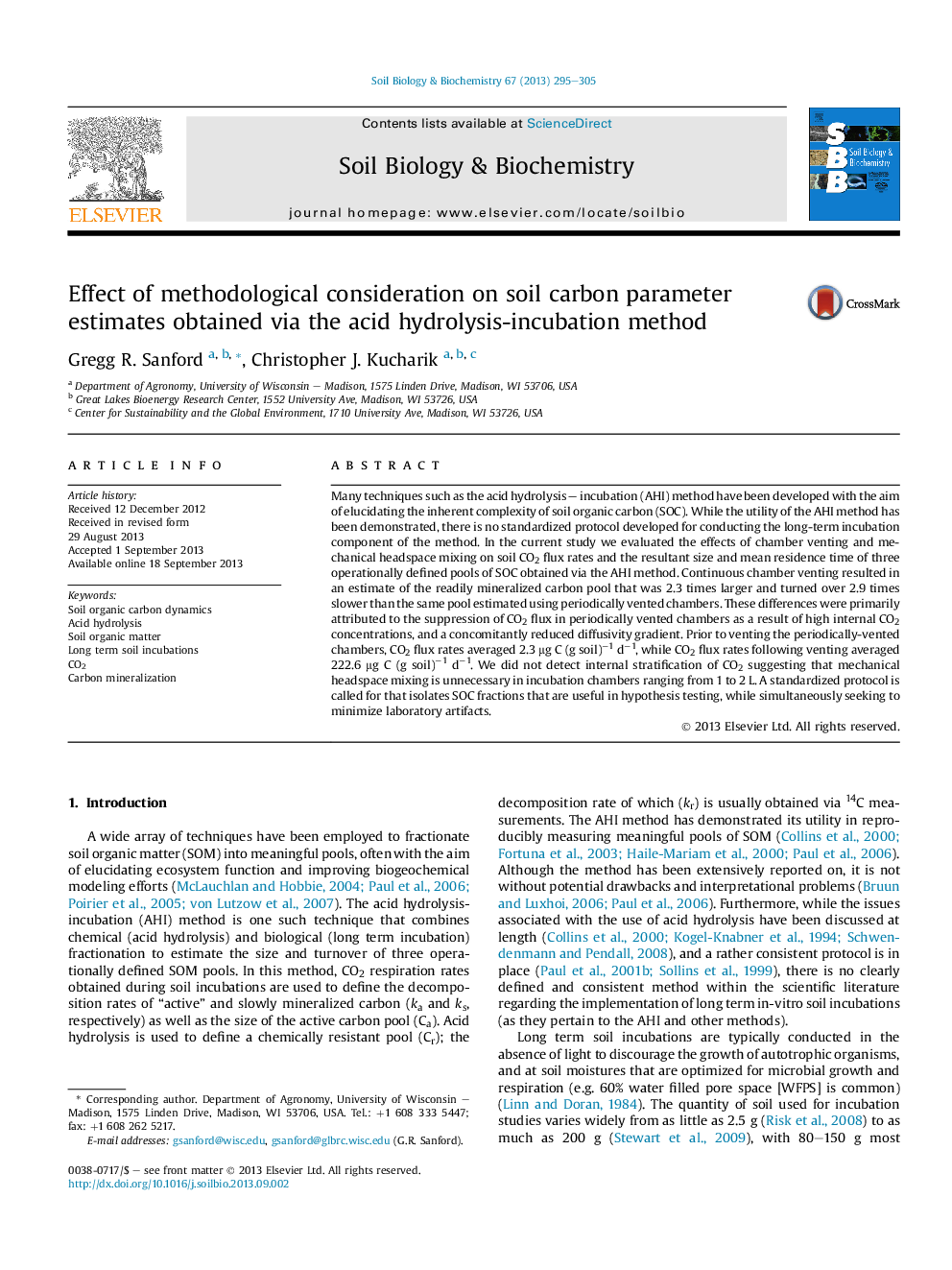| Article ID | Journal | Published Year | Pages | File Type |
|---|---|---|---|---|
| 8365172 | Soil Biology and Biochemistry | 2013 | 11 Pages |
Abstract
Many techniques such as the acid hydrolysis - incubation (AHI) method have been developed with the aim of elucidating the inherent complexity of soil organic carbon (SOC). While the utility of the AHI method has been demonstrated, there is no standardized protocol developed for conducting the long-term incubation component of the method. In the current study we evaluated the effects of chamber venting and mechanical headspace mixing on soil CO2 flux rates and the resultant size and mean residence time of three operationally defined pools of SOC obtained via the AHI method. Continuous chamber venting resulted in an estimate of the readily mineralized carbon pool that was 2.3 times larger and turned over 2.9 times slower than the same pool estimated using periodically vented chambers. These differences were primarily attributed to the suppression of CO2 flux in periodically vented chambers as a result of high internal CO2 concentrations, and a concomitantly reduced diffusivity gradient. Prior to venting the periodically-vented chambers, CO2 flux rates averaged 2.3 μg C (g soil)â1 dâ1, while CO2 flux rates following venting averaged 222.6 μg C (g soil)â1 dâ1. We did not detect internal stratification of CO2 suggesting that mechanical headspace mixing is unnecessary in incubation chambers ranging from 1 to 2 L. A standardized protocol is called for that isolates SOC fractions that are useful in hypothesis testing, while simultaneously seeking to minimize laboratory artifacts.
Related Topics
Life Sciences
Agricultural and Biological Sciences
Soil Science
Authors
Gregg R. Sanford, Christopher J. Kucharik,
